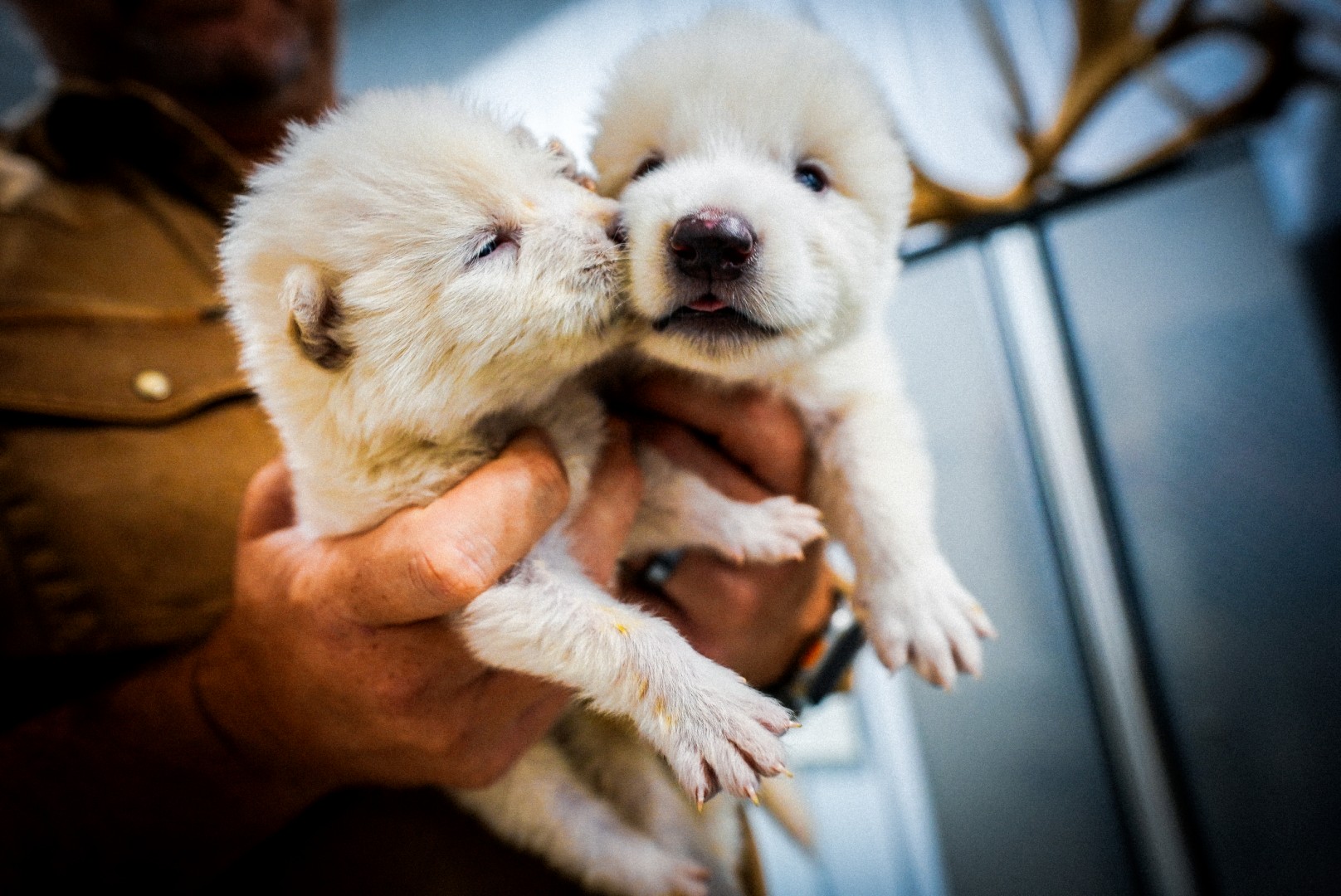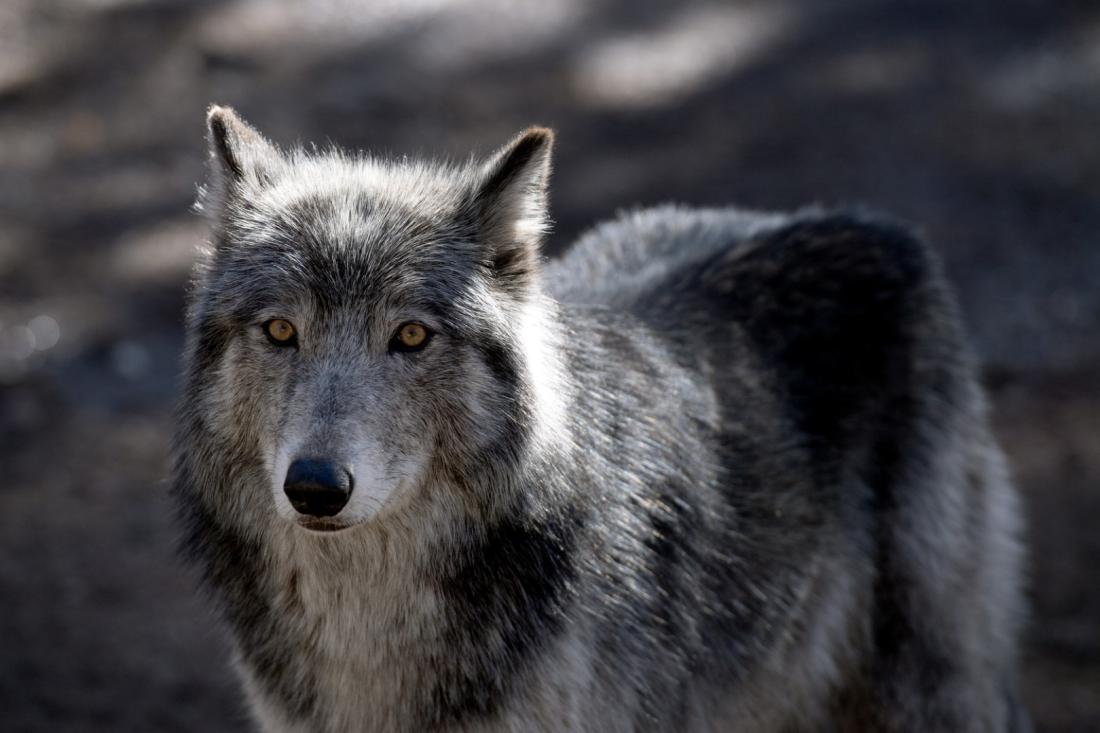
Trump cabinet official misleads on 'de-extinction' after wolf cub announcement
- Published on April 14, 2025 at 22:21
- Updated on April 22, 2025 at 23:06
- 5 min read
- By Manon JACOB, AFP USA
Social media posts -- including from tech billionaire and Trump aide Elon Musk on his platform X -- shared photos and video of the cubs, claiming that the work by the private biotechnology firm Colossal Biosciences "resurrected" the dire wolf, a species that vanished about 12,000 years ago.
The Trump administration quickly piggybacked off the news to push for a weakening of policies targeting the protection of endangered species in the United States (archived here).
On April 7, Secretary of Interior Doug Burgum claimed on X that the "revival of the Dire Wolf" signaled "the advent of a thrilling new era of scientific wonder, showcasing how the concept of 'de-extinction' can serve as a bedrock for modern species conservation."
Burgum doubled down during a live-streamed town hall on April 9, 2025 saying: "If we're going to be in anguish about losing a species, now we have an opportunity to bring them back" (archived here).
"Pick your favorite species and call up Colossal," he claimed, as the current federal government continues to target protections of various endangered species, often tied to misleading narratives.

But it is not possible to create an animal that is 100 percent genetically identical to a species that is extinct and the technology's potential to preserve existing species from current harms, including human threats, are based on misleading assumptions, experts told AFP.
Dire wolf... or not?
Colossal Biosciences, which speaks of achieving "functional de-extinction" with its experiment, says it tweaked the DNA of a modern-day gray wolf with carefully chosen genes from dire wolf fossils. This modified genetic material was then inserted in a grey wolf egg and implanted in a common dog as a surrogate mom.
The team studied DNA from two dire wolf fossils -- a tooth from 13,000 years ago and a skull fragment dated back 72,000 years -- and compared them to the DNA of the gray wolf, a species that is alive and well.
This does not, however, make them "dire wolves," independent experts told AFP.
"Dire wolves and grey wolves share a common ancestor about 6 million years ago, meaning that they are not particularly closely related -- roughly the same distance in time that we separated from what became chimpanzees," geneticist Adam Rutherford (archived here) told AFP on April 10.
The three cubs had their genomes slightly edited to physically resemble dire wolves, Rutherford added.
"The coats are white under the presumption that Dire wolves were white -- which is actually unknown, but that is what they look like in Game of Thrones, which I presume must've been the motivation for this genetic edit," Rutherford said.
The original dire wolf, Rutherford noted, was more closely related to jackals than to wolves, and there is no existing ecological niche today that is similar to the niche into which they fit historically.
Adrian Treves (archived here), environmental professor and founder of the Carnivore Coexistence Lab, said that as Colossal plans to keep the cubs in captivity, they cannot be dire wolves functionally or behaviorally.
"That is a captive wolf with dire wolf genes raised by a dog with humans providing food, security, and stimuli that a dire wolf would never have experienced," Treves told AFP on April 11.

No 'de-extinction'
Bridgett vonHoldt, a professor of evolutionary genomics and part of the science advisory board of Colossal (archived here), told AFP on April 8 that the experiment represented a "monumental step" for biotechnology.
While several members involved in the startup's work speak of "de-extinction" of a species, independent researchers AFP talked to say the notion is misconstrued.
Quantitative paleobiologist Emma Dunne (archived here) told AFP that "de-extinction" is not scientifically attainable.
"'De-extinction' not only requires an organism to be genetically and physical present, but it also needs to reproduce and interact with its environment," she told AFP on April 9. "These experiments are confined to the lab and do not tell us anything about how these animals would actually live and reproduce in their environments."
She pointed to a failed "de-extinction" attempt in the early 2000s with the genetic cloning of a Pyrenean Ibex (archived here).
But Colossal's chief science officer Beth Shapiro (archived here), said on April 8: "Our goal is not to create perfect genetic copies of something that doesn't exist anymore. It's to do something that will help shape ecosystems by restoring balance... and hopefully make these ecosystems more robust to whatever perturbations," mostly caused by humans.
Des Moines University's vertebrate paleontologist, Julie Meachen (archived here), co-authored in 2021 a scientific paper on dire wolves and gray wolves' shared ancestry alongside Shapiro.
"I think the technology can help the survival and preservation of several endangered species," she argued on April 10, particularly for species such as the red wolf -- the world's most endangered wolf which the startup states it is working on (archived here).
Inflated conservation potential
However, independent researchers and foundations warn such experiments could be a distraction from other efforts needed to preserve species.
Climate change threatens over 10,000 species on the International Union for Conservation of Nature Red List, a number expected to significantly increase with further warming by 2100 (archived here and here).
"If someone was determined to use genetics to save threatened species, their time and money would be better spent on breeding climate-resilient individuals, which of course is basically impossible given how complex the associations between climate and organisms is in reality," palaeobiologist Dunne said.
The Wolf Conservation Center (archived here) in New York told AFP on April 11 that there is a "need to focus on protecting the wildlife and wild places that we currently have, not gutting policies that allow us to truly save endangered species."
Wolves' first and main threat remains humans, as reported in multiple studies (archived here and here), made greater by inflated fears of attacks on humans and their livestock (archived here).
"Add up the intolerance for living wolves, why would this nation ever want to resurrect extinct species?" wolf expert Carter Niemeyer (archived here) said on April 11.
While genetic engineering offers (archived here) potential for adaptation of certain plants and crops against climate change, introducing modified specimens can also disrupt or cause harm (archived here and here) to species in the wild, researchers say.
AFP has covered other misleading claims about environmental threats to species here.
This article was updated to add metadata.This article was updated to clarify the attribution of the quote in paragraph 28.April 22, 2025 This article was updated to add metadata.
April 15, 2025 This article was updated to clarify the attribution of the quote in paragraph 28.
Copyright © AFP 2017-2026. Any commercial use of this content requires a subscription. Click here to find out more.
Is there content that you would like AFP to fact-check? Get in touch.
Contact us




